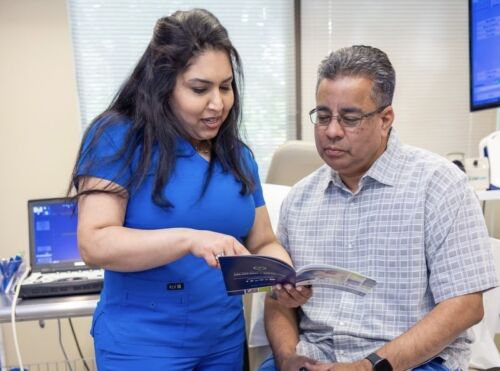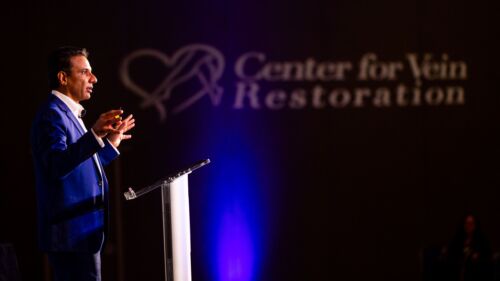Varicose veins cause pain and swelling and can increase your risk of developing a blood clot in the leg. But you can prevent a potentially dangerous blood clot by treating your vein disease.
A 2018 study found that patients diagnosed with varicose veins experience an increased risk of blood clots. But just because you have varicose veins does not mean that you also have blood clots. You can lower your risk today by treating your vein disease.
How do blood clots form?
Blood clotting is normal and necessary. It is your body’s mechanism to stop excessive bleeding after an injury. Under ordinary circumstances, when a blood vessel ruptures, platelets and protein substances in the blood bond to form a stable clot that repairs the blood vessel. The clot dissolves as the blood vessel heals.
However, clots sometimes develop when there is no injury, as seen in patients with varicose veins. Varicose veins signal a breakdown in your circulation. When the tiny valves in your veins lose their strength, they allow blood to backflow and pool, causing the veins to become swollen and eventually develop into varicose veins.
A breakdown in blood circulation can also lead to stagnant blood cells thickening. The cells clump together, increasing the chances of a clot developing.
Deep vein thrombosis (DVT) is a clot that develops in the legs. You may experience swelling, pain, and warm or red-colored skin if you have a DVT. Those symptoms demand immediate medical treatment to prevent the clot from traveling to the lungs, where it could block oxygen flow and cause a life-threatening pulmonary embolism (PE). Signs of PE include shortness of breath, dizziness, rapid pulse, and coughing up blood. Go to the emergency room immediately if you experience any PE symptoms.
Preventing blood clots
Obesity and age are two risk factors for varicose veins. Carrying extra pounds puts excess pressure on the veins, weakening the vein valves. The valves also naturally lose their strength as we age. But another significant risk factor for varicose veins is a sedentary lifestyle.
You can eliminate varicose veins with minimally invasive surgical treatments. In the meantime, you should consider wearing compression stockings when you need to sit or stand for prolonged periods. These highly elastic socks gently squeeze the veins in your legs to encourage healthy blood flow, which will help in preventing blood from clotting.
We’re the vascular specialists
Center for Vein Restoration (CVR) specializes in vascular disorders, such as varicose veins and DVT. Let us know if you think you have varicose veins and are at risk for DVT. We can diagnose your condition and customize a treatment plan. Healthy veins are an essential part of your overall health, so never ignore the signs of vein disease. Schedule a consultation online at any of CVR's 100+ clinics nationwide. If you prefer, you can call us at 240-965-3915 to schedule an appointment or ask questions. We're here to serve your vein health needs!

 About Vein Disease
About Vein Disease
 Spider Veins
Spider Veins
 Varicose Veins
Varicose Veins
 Vein Disease Treatments
Vein Disease Treatments
 Treating Spider Veins
Treating Spider Veins
 Treating Varicose Veins
Treating Varicose Veins
 About Us
About Us
 Patient Resources
Patient Resources
 Physician Resources
Physician Resources


